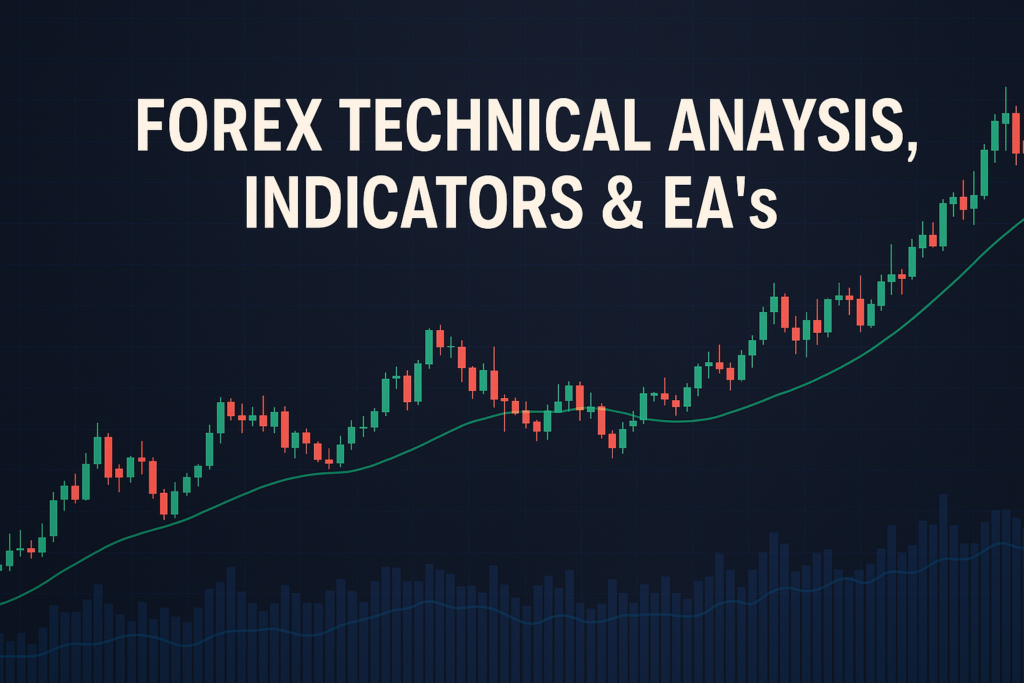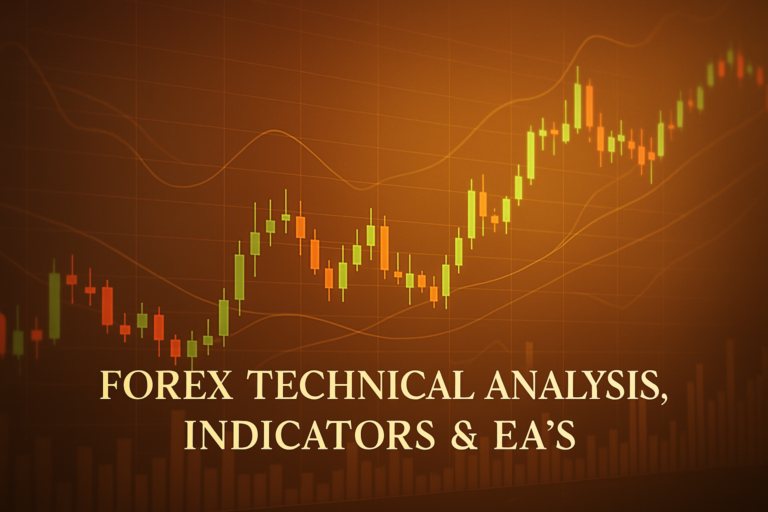
Market Facilitation Index is a crucial tool for Forex traders to analyze market efficiency and enhance trading strategies.
The Market Facilitation Index (MFI) is an important tool for Forex traders. It helps analyze the price movements and understand market behavior. By using the MFI, traders can determine whether the market is moving efficiently or if there is confusion in price action.
However, many traders, both beginners and professionals, find it challenging to grasp the concept of MFI. They may struggle to interpret the signals it provides or how to apply it effectively in their trading strategies. Understanding the MFI is essential for traders who want to enhance their trading skills and make informed decisions.
This article will guide you through the Market Facilitation Index, its history, advantages, disadvantages, and trading strategies. You will learn how to apply MFI in different trading scenarios and deepen your understanding of Forex trading.
Before diving into the Market Facilitation Index, it’s essential to know about other indicators like Williams’ Percent Range (%R), which can complement your trading analysis.
What is a Market Facilitation Index?
The Market Facilitation Index is a unique indicator that helps traders understand the market’s efficiency. In simple terms, it shows how price changes occur in relation to volume. When there is a significant price movement with high volume, it indicates a strong market trend. Conversely, if the price changes with low volume, it suggests weak price action.
Types of Market Facilitation Index
There are different types of Market Facilitation Indexes that traders can use based on their strategies. The basic ones include:
- Simple MFI: This is the most straightforward version, focusing on standard price movements.
- Exponential MFI: This type gives more weight to recent price movements, making it more responsive.
- Weighted MFI: This version takes into account multiple factors, making it suitable for advanced traders.
How Market Facilitation Index Smooth Out Price Action
The Market Facilitation Index helps smooth out price action by filtering noise in the market. This means it can help traders identify genuine trends and avoid getting caught up in false signals. By analyzing the MFI alongside price movements, traders can better understand the underlying market dynamics.
Common Periods Used and Why
Traders typically use common periods like 14, 21, or 50 when analyzing the Market Facilitation Index. These periods provide a good balance between responsiveness and reliability. Shorter periods may react too quickly, while longer periods can lag behind the market movement. Choosing the right period is crucial for effective trading.
The History of Market Facilitation Index: How It Became Popular
Origin of Market Facilitation Index
The Market Facilitation Index was created by Bill Williams in the 1990s. He developed this tool to help traders understand market behavior and make better decisions. Bill wanted to create a way to measure market efficiency effectively, and the MFI became a vital part of his trading philosophy.
When Did Traders Start Using It Widely?
Real-life Stories
Many professional traders attribute a portion of their success to the Market Facilitation Index. For example, one trader used the MFI to identify a breakthrough market trend, allowing them to make significant profits. Such stories highlight the potential of MFI in enhancing trading performance.
Advantages and Disadvantages of Market Facilitation Index
Advantages:
- Helps identify trends easily: The MFI simplifies trend analysis for traders.
- Useful for dynamic support and resistance: Traders can use MFI levels to identify key support and resistance zones.
- Works well for crossover strategies: MFI can be combined with other indicators for effective crossover strategies.
Disadvantages:
- Lags behind price movements: The MFI may not react instantly to sudden price changes.
- Can give false signals in sideways markets: During consolidation, the MFI may provide misleading signals.
How to Apply Market Facilitation Index on MT4 & MT5
Step-by-Step Guide to Adding Market Facilitation Index on Charts
To add the Market Facilitation Index on your MT4 or MT5 charts, follow these steps:
- Open your trading platform and select a chart.
- Go to the “Insert” menu, then “Indicators.”
- Find the “Bill Williams” section and select “Market Facilitation Index.”
Customizing Market Facilitation Index Settings
You can customize the Market Facilitation Index settings by adjusting the periods, colors, and types. This personalization helps you align the indicator with your trading style.
Saving Templates for Easy Application
Once you have customized the Market Facilitation Index, save the template. This way, you can quickly apply it to new charts without repeating the customization process.
5 to 7 Trading Strategies Using Only Market Facilitation Index
All Time Frame Strategy (M5 to D1)
This strategy works across all time frames and focuses on identifying key trends using MFI signals. If the MFI increases and price follows, it indicates a buying opportunity. Conversely, if MFI decreases with a price drop, it signals a selling opportunity.
Trending Strategies
In trending markets, traders can use MFI to confirm trends. For example, if MFI is rising during an uptrend, it indicates strong buying interest. Traders can enter long positions and ride the trend until MFI shows signs of weakness.
Counter Trade Strategies
For counter-trend strategies, traders can look for MFI divergences. If the price is making new highs while MFI is dropping, it may be time to consider selling. This strategy can help identify potential reversals.
Swing Trades Strategies
Swing traders can utilize MFI to find entry points during market pullbacks. If MFI shows increasing strength during a pullback, it may indicate a buying opportunity before the next price surge.
5 to 7 Trading Strategies Combining Market Facilitation Index with Other Indicators
All Time Frame Strategy (M5 to D1)
This strategy combines MFI with other indicators like moving averages. When MFI aligns with a moving average crossover, it strengthens the trade signal.
Trending Strategies
In trending markets, combining MFI with Relative Strength Index (RSI) helps confirm trends. If both indicators show strength, traders can enter trades with higher confidence.
Counter Trade Strategies
This strategy pairs MFI with Bollinger Bands. If MFI indicates weakness and price touches the upper band, it may signify a selling opportunity.
Swing Trades Strategies
Using MFI with Fibonacci retracement levels can enhance swing trading setups. If MFI shows strength at a Fibonacci level, it may indicate a good entry point for buying.
When trading, it’s essential to consider factors like brokers altering spreads, as they can impact your trading results.
Top 10 FAQs About Market Facilitation Index
1. What is the Market Facilitation Index?
The Market Facilitation Index is a tool that helps traders analyze market efficiency by measuring price changes relative to volume.
2. How do I calculate the Market Facilitation Index?
The MFI is calculated by dividing the price change by the volume. The formula is: MFI = (Price Change) / (Volume).
3. Why is Market Facilitation Index important?
The MFI helps traders identify trends and market behavior, allowing for better trading decisions.
4. Can beginners use the Market Facilitation Index?
Yes, beginners can use MFI, but they should educate themselves about its signals and how to apply it in trading strategies.
5. Are there any risks involved with using Market Facilitation Index?
Like any trading tool, MFI has its risks. It may lag behind price movements and can provide false signals in sideways markets.
6. How often should I check the Market Facilitation Index?
Traders should check MFI regularly, especially before entering trades, to gauge market conditions.
7. Can I use MFI for day trading?
Yes, MFI can be effective for day trading, especially in identifying short-term trends and price movements.
8. What time frames are best for using Market Facilitation Index?
MFI works well across various time frames, from M5 to D1, depending on your trading strategy.
9. Is Market Facilitation Index suitable for all trading styles?
The MFI can be adapted for various trading styles, including day trading, swing trading, and scalping.
10. How can I improve my trading using Market Facilitation Index?
Traders can improve their trading by combining MFI with other indicators and testing different strategies before applying them with real money.
Conclusion
The Market Facilitation Index is a valuable tool for Forex traders looking to understand market dynamics better. By grasping its concepts and applying it effectively, traders can enhance their decision-making process.
Remember to test different strategies and adapt the MFI to your trading style before using real money. With practice and patience, the Market Facilitation Index can become a powerful ally in your trading journey.
Looking to go beyond the basics? This resource offers deeper insights MacroTrends, The Motley Fool
Expand Your Knowledge
- 📌 Forex Trading Learning Road Map
- 📌 Forex Trading Course with no Fees
- 📌 Forex Trading Issues, Problems, and Solutions
- 📌 Forex Daily Forecast & Live Updates
- 📌 Forex Fundamental & News Analysis: Tomorrow’s Market Movers & Trade Opportunities
- 📌 Forex Education Hub: Learn & Profit
- 📌 Forex Technical Analysis, Indicators & EA’s
Start Trading Today
Ready to take your forex trading to the next level? Open an account with Exness, one of the most trusted platforms in the industry. 👉 Sign Up Now and trade with confidence!
My recommended broker stands out with ultra-low spreads for beginners, instant withdrawals, and zero spread accounts for pro traders.
Trusted since 2008, lightning-fast execution, no hidden fees, and a secure, transparent trading environment—giving you the edge you need to succeed. 🚀
Watch this helpful video to better understand Market Facilitation Index:
Note: The video above is embedded from YouTube and is the property of its original creator. We do not own or take responsibility for the content or opinions expressed in the video.
The Market Facilitation Index (MFI) is a crucial tool for traders looking to analyze the volatility and strength of price movements in various assets, particularly in Forex trading. This indicator helps traders assess whether a trend is strong enough to warrant entering a trade. By measuring the size of price movements alongside changes in trading volume, the MFI can signal potential market cycles, helping traders decide when to engage in trades and when to stay out. The MFI can be applied across all timeframes and market conditions, making it a versatile tool for both beginners and experienced traders. It uses a system of color-coded bars to convey the strength of price trends.
The MFI indicator generates four primary signals based on its analysis. A green bar indicates growing price movements and increased volume, suggesting that the trend is gaining strength and may be a good time to enter trades. Conversely, a brown bar signals weakening momentum, suggesting traders are exiting the trend, which may indicate a reversal or a good time to avoid entering trades. A blue bar reflects growing price movements but with decreased volume, hinting at manipulation by speculators and cautioning against entering trades. Finally, a pink bar signifies shrinking price movements with rising volume, indicating market interest but a lack of clear direction. This analysis can help traders prepare for significant price movements, but it’s important to remember that the MFI does not indicate the actual direction of price changes, necessitating further analysis to make informed trading decisions.
In the world of Forex trading, issues can arise with brokerages, particularly concerning Brokers suspending accounts. This situation can be frustrating for traders who have not received any prior notice. It’s essential for traders to be aware of the potential for account suspension and to understand the steps they can take to navigate this common issue. Being informed and prepared can help you manage your trading more effectively and avoid disruptions in your trading activities.



